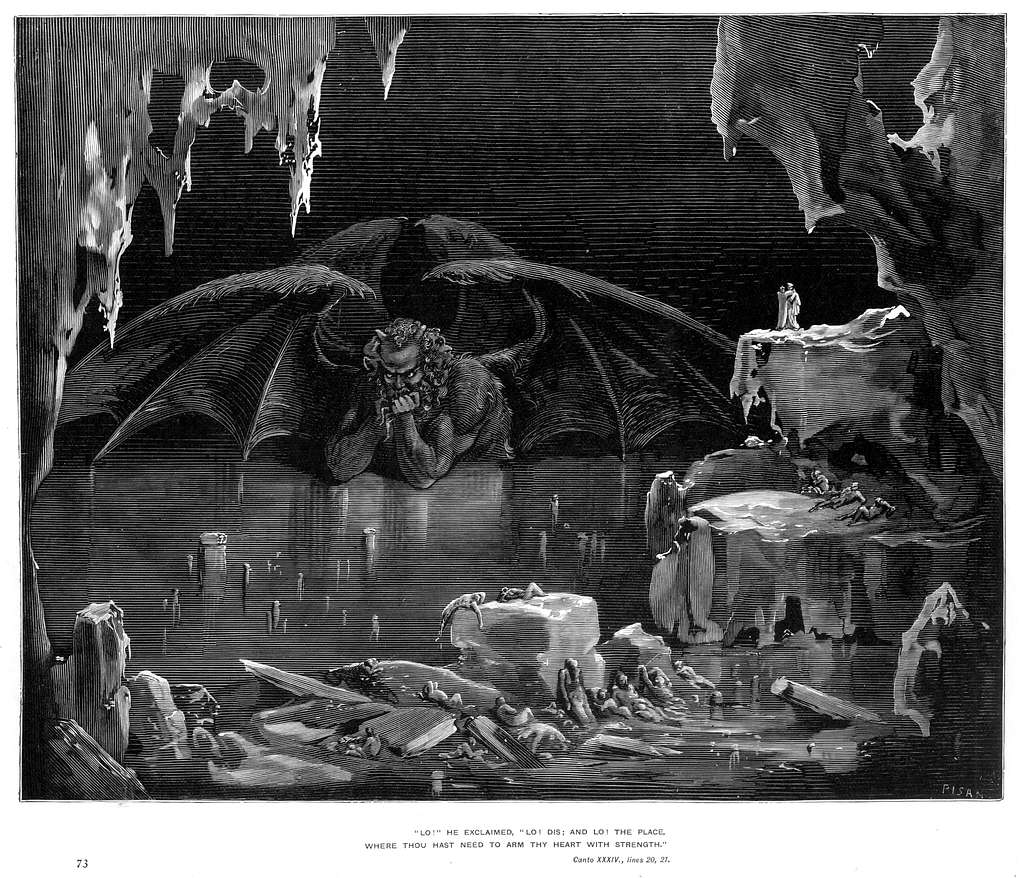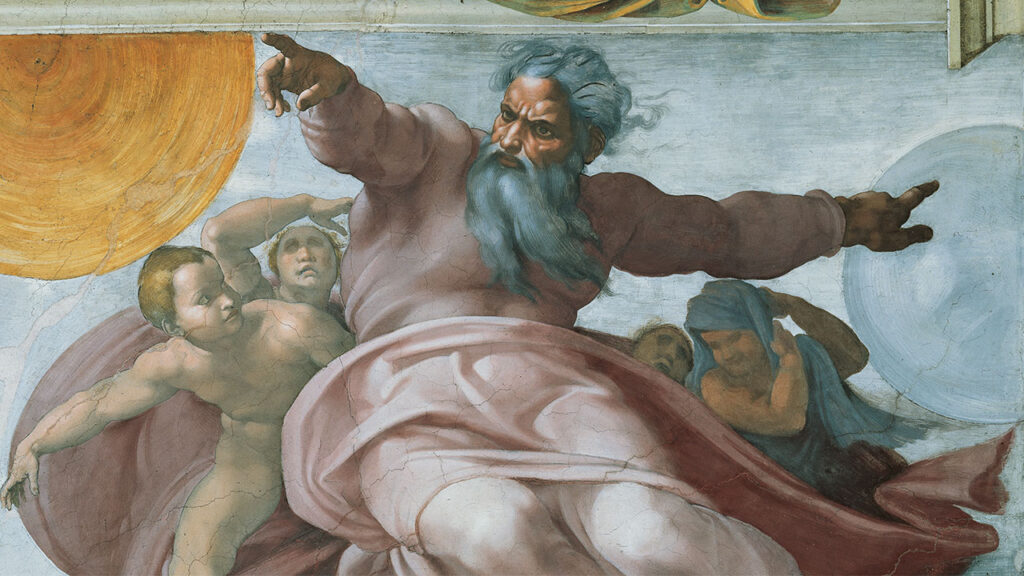Understanding Lucifer in the Bible
The Meaning of the Name “Lucifer”
The name Lucifer is found in Isaiah 14:12 in the King James Version: “How art thou fallen from heaven, O Lucifer, son of the morning!” In the original Hebrew, the phrase is helel ben shachar, meaning “shining one, son of dawn.” The Latin Vulgate translated helel as Lucifer—meaning “light bearer.” This translation solidified the association between the term and a celestial being.
Initially, the verse addressed the king of Babylon, not Satan. But Christian tradition, particularly among early Church Fathers, interpreted this poetic lament as an allegory of Satan’s fall. Over time, Lucifer became a proper name for the fallen angel who opposed God. Though modern English translations often avoid using “Lucifer,” the name still persists in theology and culture.
Lucifer as the “Son of the Morning” and “Morning Star”
In the book of Isaiah, Lucifer is called the “son of the morning”—a term evoking brightness and prominence. Ironically, the same title—bright morning star—is used for Jesus in Revelation 22:16. Jesus is the true light, Lucifer is portrayed as the counterfeit. He embodies pride and rebellion against the Most High.
This dual imagery reflects the early Christian effort to contrast Christ’s humility with Lucifer’s ambition. As the one who tried to ascend above God, Lucifer is described as wanting to “sit on the mount of assembly… above the stars of God” (Isaiah 14:13). The contrast between the Son of God and the son of dawn is central to understanding the false light Lucifer represents. Imagery is key to biblical understanding, especially in this case to see the difference is the explanation below between two key words: God and dawn.
Key Biblical Passages and Translations
Besides Isaiah 14, passages like Ezekiel 28 and Revelation 12 are vital to constructing a biblical portrait of Lucifer. Ezekiel 28 speaks of a being who was “anointed as a guardian cherub” and “blameless… till wickedness was found in you.” Again, this likely referred to a human king (of Tyre), but Christian tradition saw a symbolic reflection of Satan.
In Revelation 12, the great dragon, the ancient serpent, is identified as “the devil, or Satan, who leads the whole world astray.” Lucifer is thrown down from heaven with his fallen angels. This event is a cosmic war led by Archangel Michael. These verses helped shape the theology of the Satan fall, linking Satan with pride, rebellion, and deception. It illustrates that he is not alone and brings validity to the legions of angels God has in his heavenly army and the demons Satan has in his fallen army. These two face off against each other in the cosmic war described above and in the war over this world.
Does the Bible Mention Lucifer’s Mother?
Creation of Angels in Christian Theology
In Christian tradition, angels—including Lucifer—are not born but directly created by God. Colossians 1:16 confirms this: “For by Him all things were created: things in heaven and on earth, visible and invisible.” There is no such thing as Lucifer’s mom or Lucifer’s father. Angels do not have family trees, human bodies, or genders. They are spiritual beings created for divine service. This is what separates humans from Satan. He is in the spiritual realm, yet still under God’s dominion like humans.
From a theological standpoint, asking about Lucifer’s mother misunderstands the nature of angels entirely. The Hebrew Bible presents God as the sole Creator, and all creatures—including the highest angels—derive their existence from His will alone.
Lucifer’s Origin: Not Born, But Created
Lucifer was created as a radiant being, possibly one of the highest among the angelic hosts. Ezekiel 28 describes him as being in Eden, “full of wisdom and perfect in beauty.” But he fell because of pride and a desire to ascend to the throne of God—a direct challenge to the Most High.
Lucifer’s fall, like the fall of Adam and Eve, was rebellion solidly rooted in disobedience. But unlike Adam and Eve, who were tempted, Lucifer’s rebellion is described as self-originated. The Christian understanding of sin emphasizes the will—Lucifer chose to rise above God, not because of a mother or external influence, but because of prideful autonomy.
Misconceptions from Pop Culture and Mythology
Modern media often departs from theological accuracy. In Lucifer season 2, the character’s “Mom” is a goddess exiled from the Silver City. She seeks revenge and a return to her “universe,” implying dual creators and a cosmic family feud. But this idea of Lucifer’s mother is fiction, not Scripture.
Similarly, some online sources claim a goddess’ universe birthed Lucifer—perhaps borrowing from Roman mythology or Gnostic traditions. But these have no place in Christian doctrine, which teaches God as the only uncreated being and Creator of all.
Pop culture stories often explore Lucifer’s control of his powers, his struggle with identity, and even his relationships with humans. While entertaining, they should not be confused with the theological understanding found in religious texts. Creative license is apparent in industries such as writing or onscreen adaptations. It is important to do your research and compare against biblical truth when you have a question about Lucifer and who he is as a being.
Cultural and Mythological Interpretations
Roman Mythology and the Goddess
In Roman mythology, Lucifer was the morning star, associated with the planet Venus. As a literary figure, Lucifer represented beauty, illumination, and the herald of dawn. In some poetic traditions, he was the child of Aurora (the dawn goddess), which may explain modern fictional associations between Lucifer’s mother and some goddess.
However, the name Lucifer in Roman mythology bore no resemblance to Satan. The connection arose much later as Christian interpreters borrowed and redefined ancient names. The Lucifer of Isaiah, then, is not a Roman deity, nor is he the child of one. Christianity in order to communicate in commonality in language with the citizens of the Roman Empire have used words as synonyms for each other, much like Lucifer and Satan.
The “Goddess” in TV Lore and Popular Media
TV series like Lucifer blend biblical themes with creative liberties. The Goddess in the show is said to have created the universe alongside God. This echoes dualism, a heresy rejected by early Christians who affirmed that “the LORD our God, the LORD is one” (Deut. 6:4). In Isaiah 45:18 the prophet proclaims that the God who formed earth made it know; “I am the Lord, and there is no other.”
In Gnostic writings, the goddess Sophia is sometimes imagined as a divine emanation. This analogy too, is outside sacred scripture. The idea that Lucifer has a mom, or came from a cosmic mother figure, has more in common with big bang mythology than with biblical theology.
Comparisons with Other Beings (Eve, Mary, etc.)
Some fringe interpretations have linked Eve, the first woman, or Mother Mary, with Lucifer. Eve was the first human female and played a key role in the forbidden fruit narrative of the Garden of Eden. In a nutshell, Lucifer in serpent form conversed with her, as described in Genesis 3. Eat the fruit and disobey God. This narrative demonstrates she was created after the angels and had no role in the creation of Lucifer.
Likewise, Mary—honored in Scripture as the mother of Jesus—is sometimes called the “morning star” in devotionals. This leads to confusion; she is not associated with Lucifer. These symbolic titles must be understood contextually: Mary bears the Son of God; Lucifer, by contrast, becomes the adversary, the god of this world (2 Corinthians 4:4), leading many into deception.
Even brother Abel—murdered by Cain—is sometimes mentioned in esoteric theories linking Cain to demonic lineage. But these are extra-biblical and unsubstantiated by Christian tradition.
Christian Interpretations Across Time
Early Church Fathers and Jewish Traditions
Jewish traditions never identified the Isaiah 14 figure as Satan. They understood it as a satirical judgment on the arrogant king of Babylon. It was the early Church Fathers, like Origen, Tertullian, and Jerome, who read deeper spiritual meanings into the text.
They viewed the “fall from heaven” imagery as applicable to a fallen angel—Lucifer—who tried to usurp God’s throne. However, none of these early theologians speculated about Lucifer’s parentage. For them, Satan’s fall was an act of rebellion, not birth.
Medieval Views on Lucifer’s Fall
By the Middle Ages, the narrative of Lucifer’s fall became well-established in Christian thought. Writers like Dante and theologians like Thomas Aquinas described Lucifer as the most beautiful angel, who became Satan through disobedience. Aquinas emphasized that angels, including Lucifer, were non-corporeal beings created by God. These beings are not physical in form in the same way as humans. No mother. No father. They are a celestial being.
This period also introduced vivid imagery: the flaming sword barring access to Eden, the hierarchy of angels, and the war in heaven led by Michael the Archangel. These helped shape a rich theology of spiritual warfare—but without attributing to Lucifer any lineage. Lineage arrived at the creation and foundation of the physical earth. God gave the extraordinary gift of physical identity to humans, unlike the angels in heaven.
Modern Biblical Scholarship and False Assumptions
Modern biblical scholars stress context and proper translation. Most agree that the word Lucifer in Isaiah 14 is not a name but a metaphor. Furthermore, the original audience would not have seen it as a reference to Satan, let alone a being with a mother. Context is important when it comes to history, theology, and cultural norms of the day from the written biblical texts.
Modern misunderstandings often arise from combining texts with TV theology or new-age speculation. Scripture warns against false prophets and misleading teachings (2 Peter 2:1). That includes distorted ideas about Lucifer’s mom. It is important to know scripture in order to align what is fake theology and what is truth. Understanding that modernism hit mainstream in the 19th and 20th centuries is key to understanding how society has broken from cultural traditions and norms. The historic past was trade with new experiential ideas and creative license. This comes through in TV dramas like Lucifer
Lucifer Has No Mother in Christian Theology
So, who is the mother of Lucifer? The biblical and theological answer is: no one. Lucifer, like all angels, was created, not born. He has no mother, no father, and no divine consort. Lucifer was once a bright light, a light bearer, who chose rebellion against the Most High. Rebellion that has led to a separation from the divine.
He is described as the angel of death, the deceiver of the whole world, and the one who masquerades as light. But unlike Jesus—the true bright morning star—Lucifer’s brilliance is counterfeit. He is not the Son of Man; that is Jesus. Jesus is God incarnate born from Mary. In conclusion, Satan is a being who sought equality with God as one of His created beings and was cast down.
From the Garden of Eden to Revelation, Lucifer’s role is to deceive and destroy, not to embody some tragic myth of divine maternity. While fiction may play with the idea of Lucifer’s mom, sacred scripture affirms one Creator: God alone.







